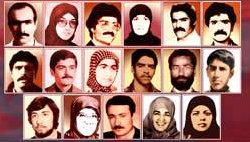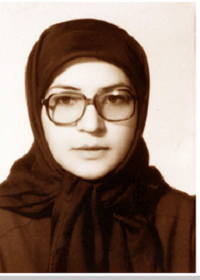

| Online: | |
| Visits: | |
| Stories: |
voiceof #Iran** The shining stars and heroines of the Iranian Resistance
voice of Iran** The shining stars and heroines of the Iranian Resistance
February 8th marks the anniversary of a fate-making event in the history of the Iranian people’s quest for freedom.
On February 8, 1982, Khomeini’s Revolutionary Guards surrounded and destroyed the headquarters and killed some of the most prominent leading figures of the PMOI. Khomeini –still alive in those days– thought that by dealing such a heavy blow to the opposition, he could put up a show of force, demoralize the staunch supporters of the movement and break their resistance in prisons and outside.It was an unequal battle between thousands of heavily armed guards vs. 20 freedom fighters. He thought victory is certain. However, the champions of freedom did not surrender and fought to the last breath, creating an epical scene that strengthened the movement even further.The women involved in this battle left a brilliant legacy in the history of the Iranian people’s struggle for freedom and democracy. Brave women who did not surrender and resisted and fought courageously to the last breathe to herald a new world for their fellow compatriots. Today, their resolve and courage has been multiplied in the ranks of the pioneering women in the PMOI who lead the Resistance movement.
Ashraf Rajavi
The shiniest image in this episode belonged to Ashraf Rajavi.Born in 1951 in Zanjan, she received her Bachelors of Science in Physics from Tehran University. But Ashraf’s heart bled for the deprived people who suffered in a country that sits on a sea of oil. Despite having the opportunity to lead a good life, she chose to help the underprivileged and travelled long distances to various cities and villages to learn about their problems and help them find solutions.In this process, she got to know the PMOI, the newly formed underground anti-Shah organization, and joined it in 1971. She got arrested twice from 1972-1974 and in 1976 and endured savage tortures as a result of which she lost hearing in one ear. She was sentenced to life in prison the last time she was arrested but she was freed with the last group of political prisoners on January 20, 1979, before the Iranian Revolution that toppled the Shah in the same year on February 11.After freedom, she resumed her activities as the most experienced female member of the organization. Her task was monumental considering the throngs of young women and girls who wanted to join the movement after the revolution, especially that she was their role model.In the first round of parliamentary elections after the Shah’s fall, Ashraf was nominated as the most prominent PMOI woman in the list of PMOI candidates for Tehran.After the beginning of the Resistance on June 20, 1981, when the PMOI decided to send their leader abroad to be the voice of the movement, Ashraf stayed behind as his representative. So, on February 8, 1982, she and her infant son were at the PMOI’s central headquarters. When the attack began, she put her son in the bathroom to keep him safe from the shootings and smoke, and went back to defend her comrades.All of them fought to the last breath and proudly gave their lives.Later on, the Revolutionary Guards took the bodies of these brave men and women to the Evin Prison. They laid the bodies in the yard covered with snow and took young prisoners to see their slain leaders to break their resistance but their plans were foiled when prisoners paid their tributes and chanted “Death to Khomeini, Long live Rajavi.“After February 8, 1982, Ashraf’s life and death became the tradition of a generation of PMOI women in Iran who lead the Iranian Resistance today.source:care for Humans in #Iran 2017/02/01






